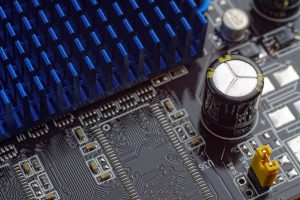
Is a PLC always a PLC, or is it a PAC, or an IPC? What’s the difference? Which one do I need for my process or machine? Before we try to answer these questions, let’s start by filling in some historical context and defining each term.
PLCs
Programmable Logic Controllers (PLCs) are industrial computers, used for automation and control. A PLC system monitors inputs, makes decisions based on its program, and controls outputs to run a process or automated machine. The confusing thing is that this description also fits PACs (Process Automation Controllers) and IPCs (Industrial PCs).
So what’s the difference? There must be some clear definition between the three, right? Well, the truth is, there’re only very general guidelines that describe the differences, and there’s a lot of overlap.
PACs
By traditional definition, PACs are considered to be more decentralized, able to connect to remote IO and other PACs. They’re also touted as having more advanced programming capabilities compared to a PLC’s ladder logic language. This definition may have worked 20 years ago, but today virtually all PLCs have these features as well.
A more modern definition for PAC is illusive. The cRIO platform from National Instruments (NI) is a good example of a modern controller with the PAC label. It has features like a built-in FPGA (Field Programmable Gate Array) that aren’t seen on PLCs, but what exactly constitutes a PAC? The best I can come up with, a PAC is basically a PLC with a couple extra bells and whistles. Some of these extra bits will be adopted by the PLCs of tomorrow, further confusing the nomenclature.
IPCs
IPCs, like their non-industrial counterparts run operating systems (OSs) like Windows or Linux, giving them access to nearly endless software tools and connectivity options. Early IPCs were vastly different from PLCs, but just like PACs, this technology is converging. Devices that run Windows but still look and feel like PLCs have been around for years. For example, Beckhoff sells IPCs that mount in a rack with IO cards and can be programmed with ladder logic. It’s possible that in 20 years, Windows will be the norm and the term “PLC” will swallow up IPC just like it did with PAC.
Playing to Our Emotions
The terms PLC, PAC, and IPC are as much about branding as they are about capabilities, and each one has all the power to incite emotion that any logo ever did. PLCs may feel comfortable, predictable, known, reliable, safe, boring, limited. PACs may feel futuristic, exciting, scary, unknown, powerful. IPCs may feel unstable, unreliable, powerful, stable, reliable.
Emotional responses will be different depending on the individual, and may be extreme or dogmatic. For example, a person whose primary goal is to keep a plant (production facility) running may view everything in an extremely conservative way. This person may strongly prefer the term PLC because of its feeling of known, stable, reliable. He/she may avoid at all costs things called PAC or IPC with thoughts like, “PCs get viruses, break down, require updates, etc.” and “Nobody knows how to troubleshoot a PAC if something breaks.”
None of these thoughts is subjectively true across all devices with those names. In fact, many devices could easily be classified under 2 or all of those names. This is emotional thinking, rather than rational thinking, and manufacturers know their audience. A manufacturer targeting a user base in production will use the term “PLC” to describe even its most advanced offering that fits the definition of PAC. A manufacturer that focuses on R&D, test and measurement, and datalogging will choose the term “PAC” even for its simplest offerings. These labels are chosen just as much for an emotional branding effect as they are to describe a technical difference.
Closing Thoughts
So what’s the difference between a PLC, PAC, and IPC? It’s not always clear, but fortunately, that doesn’t have to get in the way of selecting a controller. Consider your goals and find something that works for your application. What is locally supported? What do other people use in similar situations? Know that each specific term is generally marketed towards certain industries and certain types of people. If you understand the target audience of a term and you understand what your position is, the term might help narrow down the options a bit, despite the vagueness of the definitions. But beware the emotional branding effect of the terms – emotional responses affect decisions, whether you notice them or not. Make sure you focus on specific, tangible benefits and capabilities while selecting a controller.

About the Author
Jon is an engineer, entrepreneur, and teacher. His passion is creating and improving the systems that enhance human life, from automating repetitive tasks to empowering people in their careers. In his spare time, Jon enjoys engineering biological systems in his yard (gardening).









